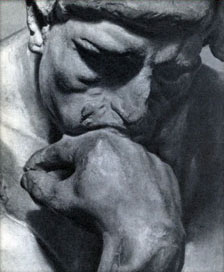Magnitude extent or size of a thing with respect to some attribute; technically, a quantity or dimension. A quantity is an attribute that admits of several or an infinite number of degrees, in contrast to a quality (e.g., triangularity), which an object either has or does not have. Measurement is assignment of numbers to objects in such a way that these numbers correspond to the degree or amount of some quantity possessed by their objects. The theory of measurement investigates the conditions for, and uniqueness of, such numerical assignments. Let D be a domain of objects (e.g., a set of physical bodies) and L be a relation on this domain; i.e., Lab may mean that if a and b are put on opposite pans of a balance, the pan with a does not rest lower than the other pan. Let ; be the operation of weighing two objects together in the same pan of a balance. We then have an empirical relational system E % ‹ D, L, ; (. One can prove that, if E satisfies specified conditions, then there exists a measurement function mapping D to a set Num of real numbers, in such a way that the L and ; relations between objects in D correspond to the m and ! relations between their numerical values. Such an existence theorem for a measurement function from an empirical relational system E to a numerical relational system, N % ‹ Num, m ! (, is called a representation theorem. Measurement functions are not unique, but a uniqueness theorem characterizes all such functions for a specified kind of empirical relational system and specified type of numerical image. For example, suppose that for any measurement functions f, g for E there exists real number a ( 0 such that for any x in D, f(x) % ag(x). Then it is said that the measurement is on a ratio scale, and the function s(x) % ax, for x in the real numbers, is the scale transformation. For some empirical systems, one can prove that any two measurement functions are related by f % ag ! b, where a ( 0 and b are real numbers. Then the measurement is on an interval scale, with the scale transformation s(x) % ax ! b; e.g., measurement of temperature without an absolute zero is on an interval scale. In addition to ratio and interval scales, other scale types are defined in terms of various scale transformations; many relational systems have been mathematically analyzed for possible applications in the behavioral sciences. Measurement with weak scale types may provide only an ordering of the objects, so quantitative measurement and comparative orderings can be treated by the same general methods.
The older literature on measurement often distinguishes extensive from intensive magnitudes. In the former case, there is supposed to be an empirical operation (like ; above) that in some sense directly corresponds to addition on numbers. An intensive magnitude supposedly has no such empirical operation. It is sometimes claimed that genuine quantities must be extensive, whereas an intensive magnitude is a quality. This extensive versus intensive distinction (and its use in distinguishing quantities from qualities) is imprecise and has been supplanted by the theory of scale types sketched above.
See also OPERATIONALISM , PHILOSOPHY OF SCIENC. R.L.C.
